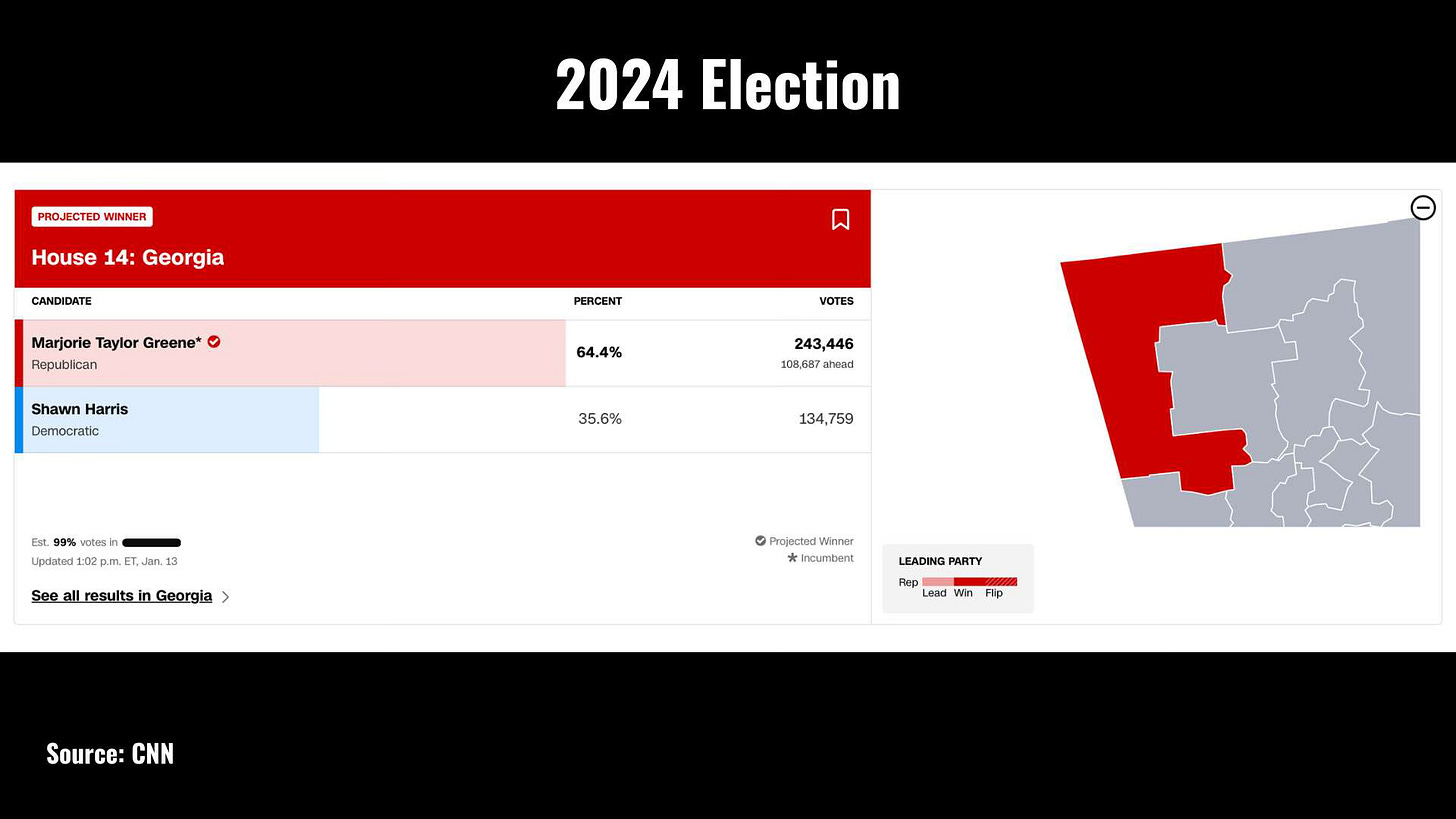How to get extremists out of Congress
"At-large" districts could counteract the gerrymandering that keeps incumbents in power
According to Gallup, people who say they’re ideologically moderate far outnumber the people on the extremes. Just 10% of Americans say they’re “very conservative,” for example, while only 9% say they’re “very liberal.” By contrast, 34% of Americans say they’re “moderate.”
But it’s a different story in Congress, where the extremists seem to dominate. You’ve got conspiracy theorists like Georgia’s Marjorie Taylor Greene (“Jewish space lasers”), white nationalists like Arizona’s Paul Gosar, and people like Louisiana’s Clay Higgins, who amplified lies about Haitian immigrants eating their pets.
Why do members like these get to keep theirs seats in Congress?
One reason is the gerrymandering of Congressional districts that dilutes any opposition and cements incumbent power.
Greene, for instance, won the 2024 election with 64 percent of the vote in her district, even though Donald Trump barely won Georgia himself. That’s because her district looks like this, to minimize the number of Democratic voters:
Gerrymandering also means fewer and fewer competitive seats – which means fewer candidates who have to appeal to both sides of the aisle in order to win. In 2024, nearly two-thirds of House (285) races (66%) were landslides won by 20-points or more, according to FairVote. Just 9% of races – or 37 seats were closer contests decided by 5 points or less (9%). The Cook Political Report counts just 9 true toss-ups for 2026, where Republicans and Democrats have equal odds of winning the seat.
So here’s an idea for changing this: At-large seats.
This is an idea I started talking about as early as 2016. If members of Congress had to represent the entire state, not just a district gerrymandered to be safely Republican or safely Democratic, they might have to be more moderate in order to keep their seat.
If Greene, for example, had to win the state as an at-large member, she actually might not have won at all. Donald Trump, after all, won only 50.7% of Georgia’s vote in 2024. The same is true in Arizona, where members of Congress are winning their districts with huge margins that don’t reflect the actual political makeup of a state. Paul Gosar, for example, won 65% of the vote in his district while Donald Trump won just 52% of the state overall. Swing states should have more swing seats, and the way to do that is with at-large contests where the entire state is up for grabs.
There’s nothing in the constitution that prevents at-large seats, and several states did, in fact, have multi-member districts or at-large seats up until 1968. And the idea of at-large seats is not unusual. In fact, it’s a common feature of many city councils and school boards. If only a handful of states had just one at-large member in Congress who was moderate – or at least less extreme - that could mean the difference between gridlock and progress.
Let me know what you think of this idea, and especially how you think it might compare to the “ranked-choice” voting system instituted by places like New York City.
Here’s a video version of this idea, with more details about the redistricting process and how it pushed out my former boss in Congress, Tennessee Blue Dog Rep. Jim Cooper:
Ten years after the landmark ruling in Obergefell v. Hodges, which guaranteed the legality of same-sex marriage, anti-LGBTQ activists are working to undermine this vital right. At least nine states are considering legislation that could pave the way for a challenge to Obergefell, according to University of Oregon political science professor Alison Gash. What’s worse, a newly conservative Supreme Court could well oblige.
Check out the latest episode of the Washington Monthy podcast, where Garrett Epps and I speak with Prof. Gash about the looming threats to equality.
Thanks for reading, watching and subscribing!
As always, your comments are welcome.
Have a great week!
Anne


